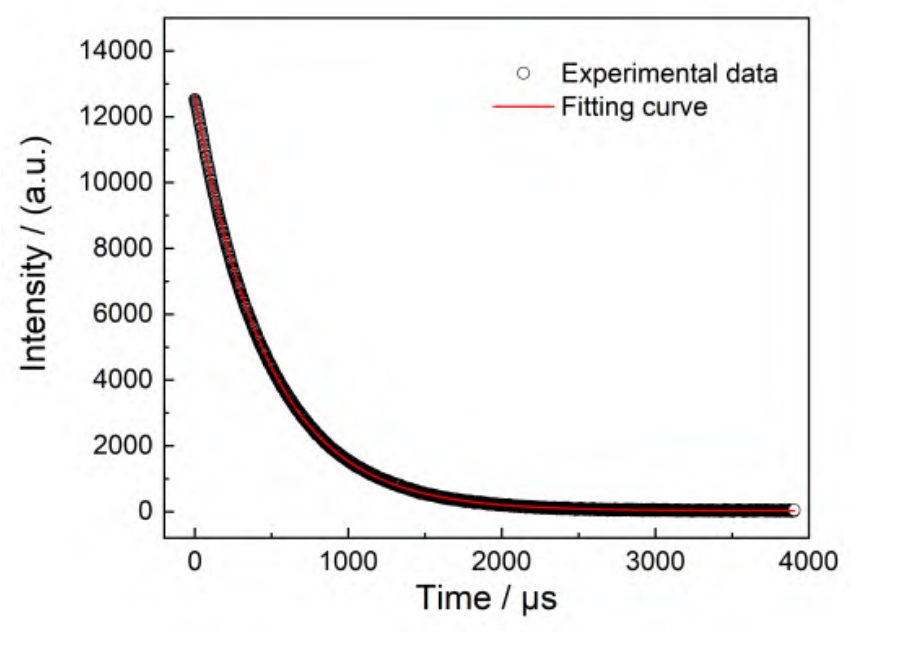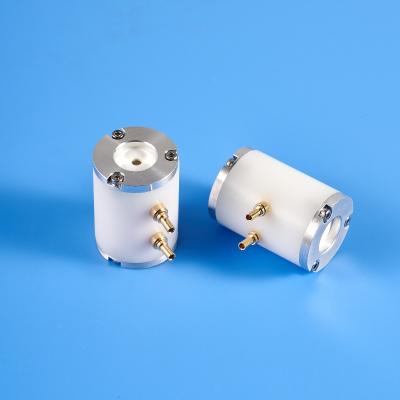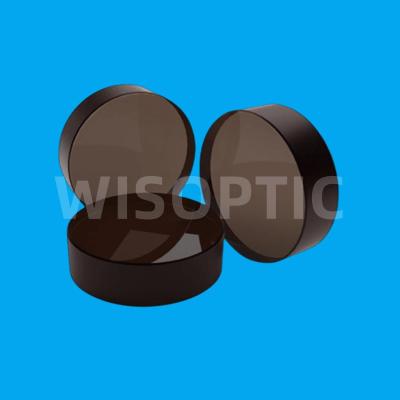Preparation of Nd:YLF Raw Materials by Melting Method and Study on Their Crystal Growth and Properties - 05
2 Results and Discussion
The absorption cross section is an important parameter for optical pumping of laser crystals. The calculation formula is: σabs = α(λ)/N, where N is the concentration of Nd3+ in the crystal (the number of ions per unit volume), which is 1.78×1020 cm-3, and α(λ) is the absorption coefficient, which can be calculated by formula (3):
α(λ) = 2.303lg(1/T)/d (3)
In the formula, d is the thickness of the crystal in the light transmission direction (cm), T is the transmittance, and the absorption coefficient in the a direction is calculated to be 5.99 cm-1 (797.4 nm), and the absorption coefficient in the c direction is 9.77 cm-1 (792.3 nm). Therefore, their absorption cross sections are 3.37×10-20 cm2 and 5.49×10-20 cm2 respectively.
Figure 9 shows the emission spectrum of Nd:YLF (www.wisoptic.com) crystal under 808 nm excitation, and the energy level transitions corresponding to the emission bands are shown in the figure. It can be seen that the emission bands of the crystal are mainly concentrated in three bands, near 0.9 µm, 1.05 µm and 1.3 µm, corresponding to the 4F3/2→4I9/2, 4F3/2→4I11/2 and 4F3/2→4I13/2 transitions of Nd3+, respectively. There are strong emission peaks at 1047 nm and 1053 nm near 1.05 µm, and the strongest emission peak is at 1047 nm.
Fig. 9 Emission spectrum of Nd:YLF crystal excited by 808 nm
Figure 10 shows the measured fluorescence decay curve of Nd:YLF crystal. The fluorescence lifetime is 483 μs after fitting with a single exponential equation. Its fluorescence lifetime is about twice that of Nd:YAG, making it easier to achieve high-energy pulsed laser output.
Fig. 10 Fluorescent decay curve of Nd:YLF crystal at 1047 nm
The stimulated emission cross section (σem) is an essential parameter for evaluating laser materials and designing laser devices. The σem of the Nd:YLF emission peak can be directly estimated from the emission spectrum according to formula (4):
Where α(λ) represents the stimulated emission cross section at wavelength λ, λ is the central wavelength of the emission band, c is the speed of light (c=3×108 m/s), n is the crystal refractive index, τm is the fluorescence lifetime, Δν is the half-maximum full width of the emission peak (cm-1), β is the fluorescence branching ratio of the corresponding wavelength energy level transition of the Nd3+ luminescent ion in the crystal, and the β value corresponding to the 4F3/2→4I11/2 transition at 1047 nm and 1053 nm is 0.18. Therefore, the emission cross sections at 1047 nm and 1053 nm are calculated to be 1.598×10-19 cm2 and 1.358×10-19 cm2, respectively. It can be found that the emission cross sections of these transitions are relatively large, which are roughly the same as the emission cross sections of Nd3+-doped YAG (1.422×10-19 cm2) and YVO4 (1.37×10-19 cm2) crystals. Since the product of the fluorescence lifetime and the stimulated emission cross section is inversely proportional to the oscillation threshold of the laser, Nd:YLF exhibits a lower laser threshold than Nd:YAG lasers.
3 Conclusion
In this study, a nearly closed melting device was used, and the raw materials were fully melted and the floating materials were fully salvaged at a temperature higher than the melting point of the YLF crystal, so as to obtain high-purity Nd:YLF polycrystalline growth raw materials. Using the raw materials prepared by the melting method, a complete Nd:YLF crystal with a size of ϕ35 mm×140 mm was grown by the pulling method in a high-purity Ar atmosphere. The XRC half-peak width of the crystal was only 0.007°, indicating that the crystal had good crystal quality. The segregation coefficient of Nd3+ in Nd:YLF crystal is 0.3, which is conducive to achieving high-concentration doping and improving laser efficiency. For different crystal directions of the crystal, the strongest absorption peaks are slightly different, which are 797.4 nm (a direction) and 792.3 nm (c direction), respectively, with absorption coefficients of 5.99 cm-1 and 9.77 cm-1, respectively, and absorption cross sections of 3.37×10-20 cm2 and 5.49×10-20 cm2, respectively. The strongest emission peak is located at 1047 nm, the emission cross section is 1.598×10-19 cm2, and the fluorescence lifetime is 483 μs. The experimental results show that the Nd:YLF polycrystalline raw material prepared by the melting method has high crystal phase purity, which can greatly reduce the formation of fluoride oxides during crystal growth, meet the requirements of crystal growth in Ar atmosphere, and provide a new technical approach for the growth of high-quality and low-cost YLF series crystals.






